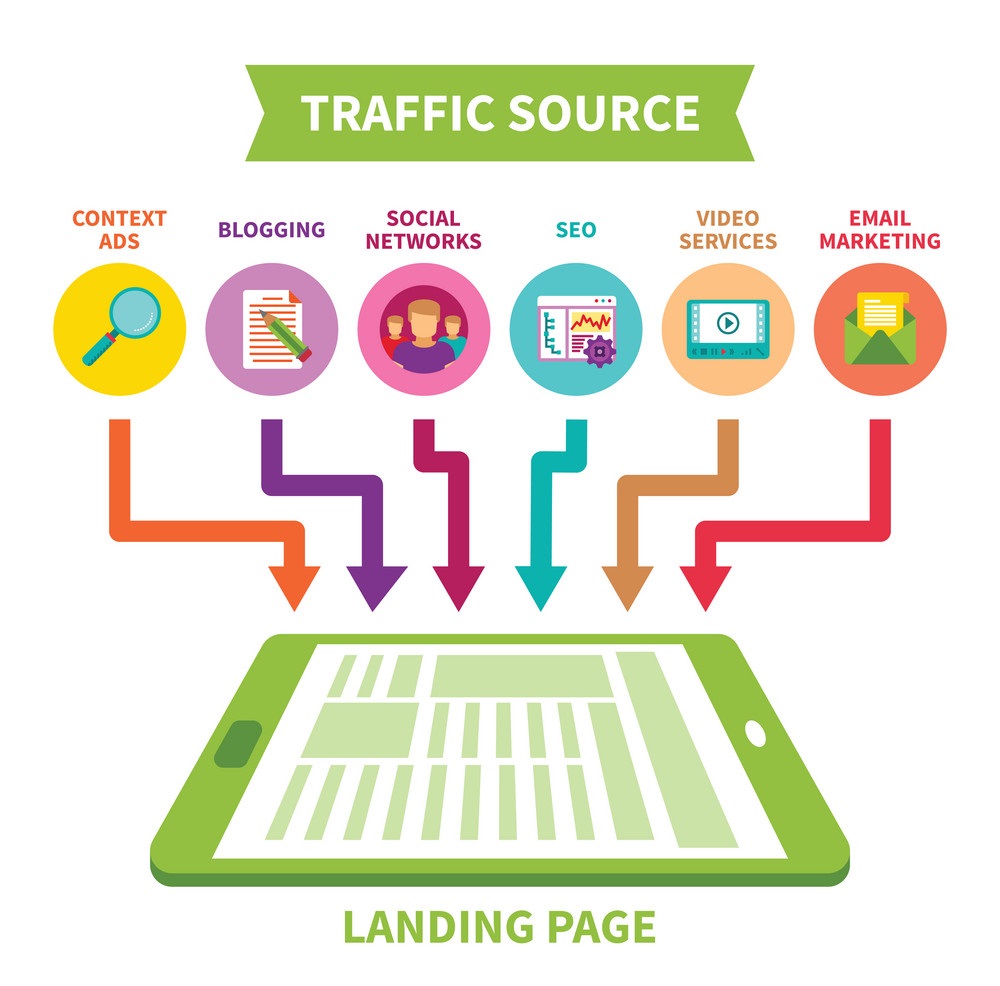What is a Landing Page?
A landing page has one purpose: to drive conversions and leads. Landing pages provide a dedicated place for audiences to complete a specific CTA in digital campaigns. They keep customers’ eyes on the ultimate goal, be it signing up for an email newsletter, completing a purchase, or starting a free trial.
Typically, each of these surfaces will include descriptive copy about the product, with all other distractions removed from view. In some cases, companies may run ads with virtually no copy except for the value proposition presented by the offer itself (e.g., “Sign up now!”). Landing pages are most often used as part of Paid Search or PPC marketing campaigns, but can also be effective when utilized as part of email marketing, social media campaigns, and more.
Typically, Landing Pages contain the following components:
– Visual logo (optional)
– Landing Page copy
– Product image or video (if applicable)
– Landing Page “Call to Action” (CTA) Button
The Call to Action is essentially what you want users or customers to do once they land on your Landing Page. It should be presented prominently, and can be given various motivations by emphasizing different benefits of completing it. For example, the CTA may lead directly to a contact form for further communication with the brand, or an ecommerce cart that allows the user to purchase the product immediately. Landing Pages are not meant for increasing brand awareness; they are designed solely for driving conversions and leads through their one specific CTA. Furthermore, Landing Pages shouldn’t contain any distractions from this goal; they must have a single message that stands out on the page.

Drive Traffic & Sales with Landing Pages
The key benefit of using Landing Pages is that they drive conversions and leads while keeping customers’ eyes focused on the ultimate goal: completing a specific call-to-action (CTA) in digital campaigns. Landing pages keep visitors focused on what you want them to do and only provide essential information about your product or service. Landing Page best practices usually include:
– Landing pages should have minimal distractions from the CTA button. Landing Page visitors should know exactly what they need to do upon arriving on the Landing Page, with no other links or calls-to-action getting in their way.
– Landing Pages should only display essential information about your product or service – no long sales text copy is allowed! Landing Page visitors are there for one clear reason only, so make sure the CTA button reflects this goal clearly. If you’re having trouble distilling your Landing Page down to one CTA button, you should probably start over and simplify the message.
– Pages must be mobile device responsive. If your Landing Page isn’t mobile responsive, it won’t display properly on a smartphone or tablet! This is critical because more than half of all web traffic now comes from mobile devices. Landing Pages that don’t display well on mobile will lose potential conversions quickly.
There are different types of Landing Pages:
– Landing page for sales and ecommerce (direct sales)
– Landing Page for branding and social media (indirect sales)
– Landing pages can also be used as part of email marketing campaigns, and other digital strategies to further engage customers about the product or service you offer. Landing pages should contain minimal distractions, with only one clear message that reflects the goal of the campaign. The CTA button should clearly reflect this goal to drive conversions and leads. Landing pages should be mobile device responsive so they will display properly on smartphones and tablets.
– Landing page for sales and ecommerce (direct sales)- Landing Page for branding and social media (indirect sales)
– Landing pages can also be used as part of email marketing campaigns, and other digital strategies to further engage customers about the product or service you offer. Landing pages should contain minimal distractions, with only one clear message that reflects the goal of the campaign. The CTA button should clearly reflect this goal to drive conversions and leads. Landing pages should be mobile device responsive so they will display properly on smartphones and tablets.

